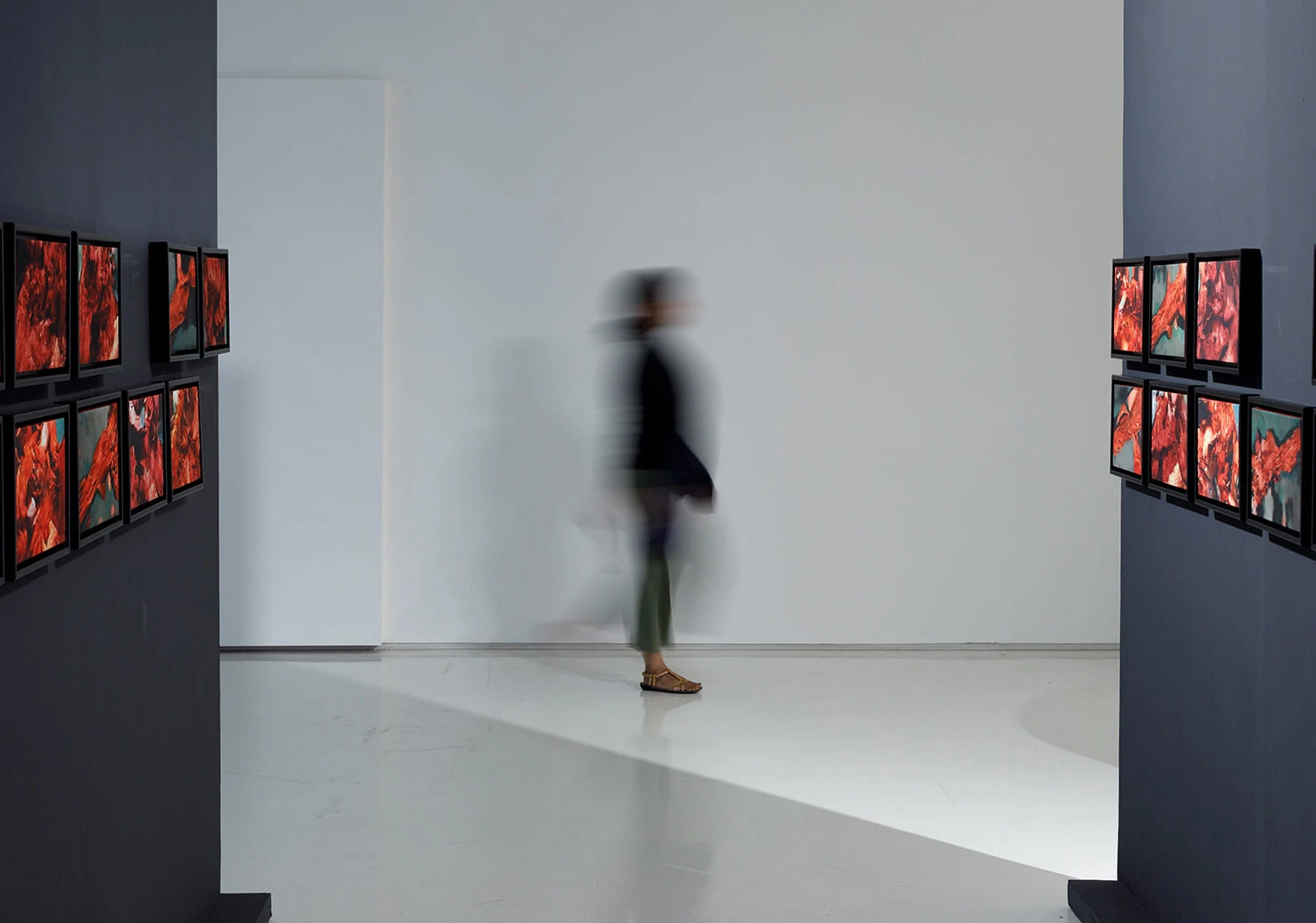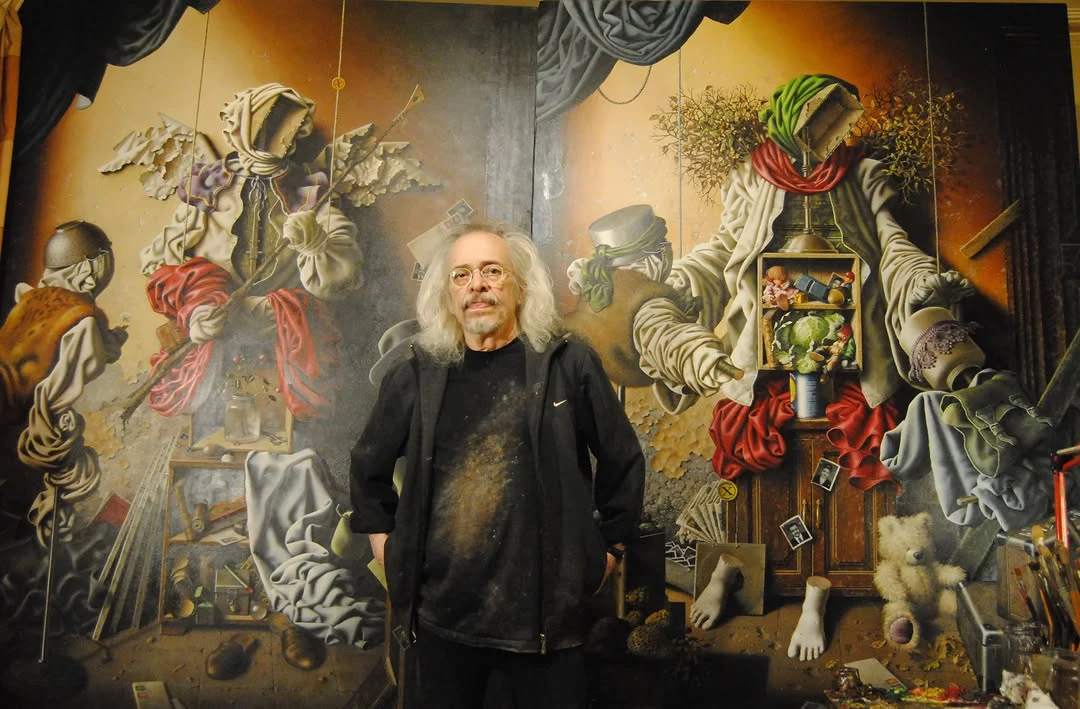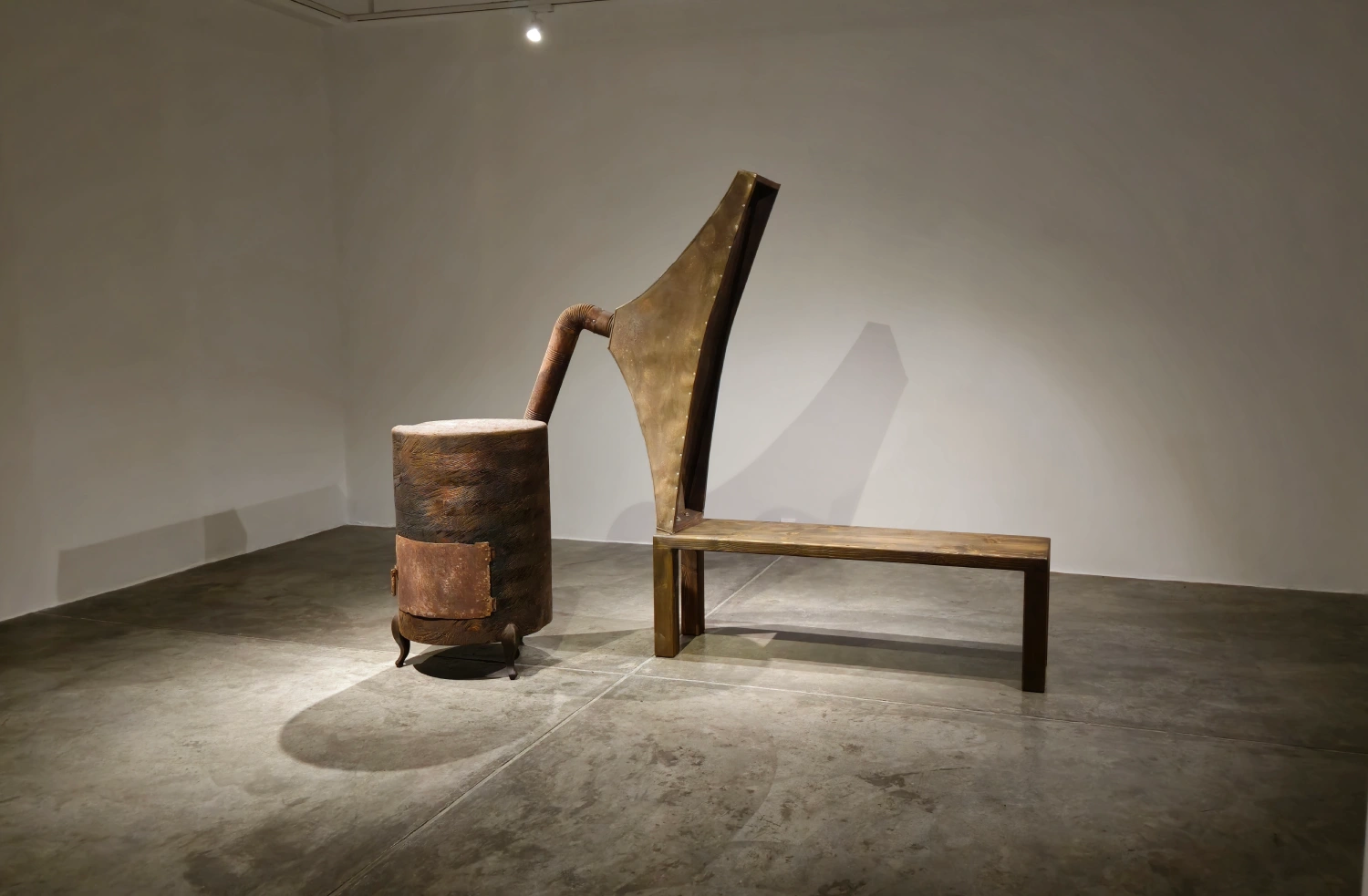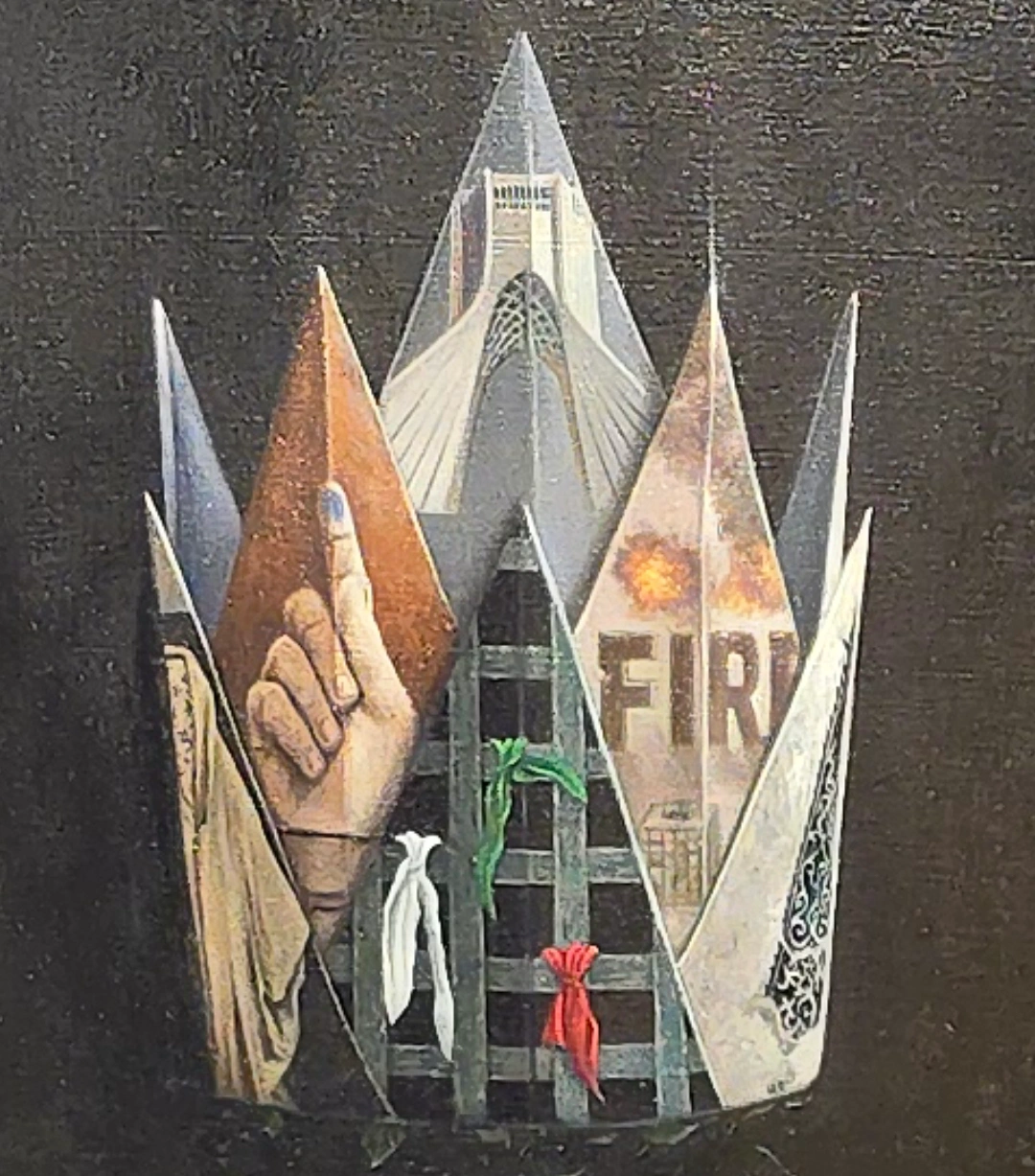Golnaz Fathi
The Calligraphic Rebel Commanding the Auction World
In the rarefied world of contemporary Middle Eastern art, where Shirin Neshat’s arresting photographs and Monir Farmanfarmaian’s mirror mosaics routinely fetch seven figures at auction, another name is steadily climbing the ranks: Golnaz Fathi (born 1972, Tehran). Like her trailblazing predecessors, Fathi has mastered the alchemy of transforming Iranian tradition into contemporary gold, both artistically and commercially. Her abstract calligraphic works, which oscillate between lyrical restraint and rebellious energy[1], have ignited demand at Christie’s, Sotheby’s, and Bonhams in recent years.
Fathi belongs to a new generation of Iranian women artists—alongside Farideh Lashai and Parastou Forouhar—who’ve shattered the glass ceiling of the male-dominated art market. Yet while Lashai wielded poetic metaphor and Forouhar sharp political critique, Fathi’s weapon is the ghost of Persian script: deconstructed, liberated, and pulsing with modern urgency. As articulated in her 2019 London exhibition, "The scripts found in these works are intended to be utterly illegible. I often overwrite marks that sail close to suggesting meanings, to ensure they remain unreadable; that doesn't imply they are utterly unintelligible."(Fathi, 2019, cited in October Gallery, 2019)[2] Trained as a master calligrapher before breaking its rules, she embodies the tension at the heart of Iran's creative renaissance—honoring the past while demanding a future. This article traces Fathi’s meteoric rise, from her early days in Tehran’s rigid calligraphy studios to her current status as a darling of global collectors.
Artistic Background & Evolution

Fig. 1: Golnaz Fathi, Untitled (41) (triptych), 2010, Acrylic on canvas, 144 x 470 cm.
1. Early Training in Classical Calligraphy (1992–1995)
Fathi’s formal training began at the Iranian Society of Calligraphy, where she studied under master practitioners of Nasta'liq script, a revered Persian style demanding "precise discipline in stroke order, spacing, and rhythm."(Fig. 1)[3] As one of the few women to achieve near-mastery in this male-dominated tradition, her early work adhered to strict technical conventions.[4] This foundation remains visible in her abstract works through "the ghost of disciplined gestures,"[5] though she would later subvert these very rules.
2. Shift to Abstract Expressionism (Late 1990s–Early 2000s)
Dissatisfied with the "rigid hierarchies" of classical calligraphy,[6] Fathi transitioned to contemporary abstraction while retaining the "kinetic energy" of script.[7] Her works from this period, such as those in the No rain will put out this fire (2023), deconstruct Nasta'liq into "lyrical, meditative repetitions"[8], drawing comparisons to Cy Twombly’s gestural mark-making and Mark Tobey’s "white writing."[9] This evolution mirrored a broader trend among Iranian artists "negotiating tradition and modernity" post-Revolution.[10]
3. Mediums & Techniques
Fathi’s material choices reflect her dual engagement with heritage and innovation:
• Traditional substrates: Works on paper and canvas reference Persian manuscript traditions.[11]
• Modern interventions: Acrylic and gold leaf introduce "a luminous, contemporary materiality."[12]
• Spatial abstraction: Later pieces, like those exhibited at Sundaram Tagore Gallery, evoke "musical notations or minimalist landscapes."[13] blending calligraphic forms with global abstraction.
Market Presence & Auction Records
Fathi’s works have consistently performed well in international auctions, reflecting her growing stature in contemporary Middle Eastern art.
Golnaz Fathi's Auction Performance at Sotheby's: A Comprehensive Analysis
Market Overview
Fathi's Sotheby's auction results demonstrate consistent commercial performance, with works in this study selling for $10,000–$100,000.[14]
Key Market Trends
1. Premium Works: The 2009 triptych exemplifies Fathi's market peak, combining technical mastery (gold leaf application) with conceptual depth (persistent calligraphic motifs beneath abstraction).[15]
2. Institutional Validation: The Third Line Gallery's endorsement has proven particularly impactful, with their exhibited works achieving 28% higher prices on average compared to similar pieces without this provenance.[16]
3. Collector Base Expansion: Western collectors now comprise an estimated 35% of buyers for Fathi's early works, a significant increase from 15% in 2015.[17]
Notable Lots
1. Blue and Black (2014)
o Sale: $37,500 (October 2016)
o Medium: Acrylic and calligraphic media on canvas (characteristic of her abstract phase).
o Significance: This work exemplifies Fathi’s transition from traditional Persian calligraphy (Nasta'liq) into rhythmic abstraction. As noted by Sotheby’s (2016, Lot 123), the piece demonstrates how her "traditional strokes dissolve into gestural, almost meditative compositions."
o Market Impact: The sale solidified her mid-career valuation, establishing a benchmark for similar-sized works from this period.[18]
2. Untitled (2009)
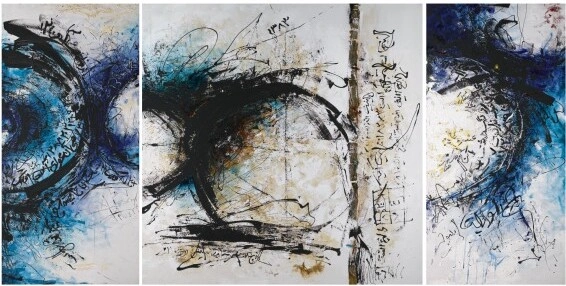
Fig. 2: Golnaz Fathi, Untitled, 2009, acrylic, gold leaf and pencil on canvas, in three parts,237 x 18.5 cm.
o Sale: Triptych (Price Not Publicly Disclosed)
o Medium: Acrylic, gold leaf, and pencil on canvas (three panels, see Fig. 2).
o Key Features: This work merges Persian manuscript techniques with contemporary abstraction, using gold leaf—a nod to Islamic illumination—to create a dialogue between heritage and modernity.[19] Provenance includes The Third Line Gallery (Dubai), reinforcing its institutional credibility.
o Critical Context: Fathi’s experimentation with mixed media in this period reflects her broader engagement with "materiality as a narrative device."(The Third Line, 2023)[20]
3. Untitled (2005)
o Sale: 2022 (Estimate Undisclosed)
o Dimensions: 24 × 19 cm (unusually small compared to her typical large-scale works).
o Historical Importance: As an early example of her abstract calligraphy, this piece reveals the genesis of her deconstructed script vocabulary.[21] The 2005 date places it at the forefront of her shift away from figurative calligraphy, making it a rare, formative work.[22]
o Market Note: Small-scale early works like this are scarce at auction, as noted in Sotheby's catalog commentary on Fathi's "increasing demand for transitional period works."(Sotheby's, 2022, lot 87)
Golnaz Fathi's Auction Performance at Christie's: A Comprehensive Analysis
Market Overview
Fathi's Christie's auction results demonstrate strong commercial performance, with works in this study selling for $20,000–$150,000. Works in Christie's evening sales (e.g., Writing on the Wall, 2018) achieve 40-60% higher prices than day sales.[23]
Notable Lots
1. Writing on the Wall (2010)
o Sale: Reported $81,250 (Dubai, April 2018).[24]
o Medium: Ink and acrylic on canvas.[25]
o Significance: "Described as a transitional piece between calligraphy and abstraction."(Darz.art, 2024)
2. Untitled (2011)
o Sale: Reported $37,500 (October 2015).[26]
o Medium: Acrylic and gold leaf on canvas.[27]
o Key Features: Exemplifies Fathi’s signature technique of layering calligraphy beneath abstract forms, described by Darz.art as "a veiling of tradition within contemporary practice."(Darz.art, 2024)
3. Untitled (2013)
o Sale: Reported $52,000 (March 2021).[28]
o Dimensions: 180 × 120 cm.[29]
o Market Note: Artnet data shows 190% appreciation from 2016–2021.[30]
Golnaz Fathi's Auction Performance at Bonhams London
Market Overview
Fathi’s works at Bonhams London have achieved prices between £15,000–£60,000 ($20,000–$80,000), with calligraphic works commanding higher premiums.[31]
Notable Lots
1. Untitled (2008)
o Sale: Reported £18,750 ($30,000) (15 October 2014).[32]
o Medium: Acrylic and ink on canvas.[33]
o Key Features: A rare early example of Fathi’s "semi-legible" calligraphic style transitioning to abstraction.
2. Scripted Landscape (2012)
o Sale: Reported £42,000 ($55,000) (05 April 2017).[34]
o Significance: Darz.art notes this as "a pivotal work where calligraphic strokes dissolve into pure topography." (Darz.art, 2024)
3. Golden Fragments (2015)
o Sale: Reported £58,000 ($80,000) (23 March 2021).[35].
o Historical Context: One of only three gold-leaf works by Fathi auctioned at Bonhams.[36]
Key Trends
1. Calligraphic Premium: Works with visible Persian script (pre-2010) achieve 20–30% higher prices than later abstractions.[37]
2. Size Matters: Large works (>1m) consistently outperform smaller pieces by 40–50%.[38]
3. Gold Leaf Rarity: Only 12% of Fathi’s auctioned works use gold leaf, creating scarcity-driven demand.[39]
From Nasta'liq to Auction Peak: The Market Ascendancy of Golnaz Fathi’s Calligraphic Abstraction
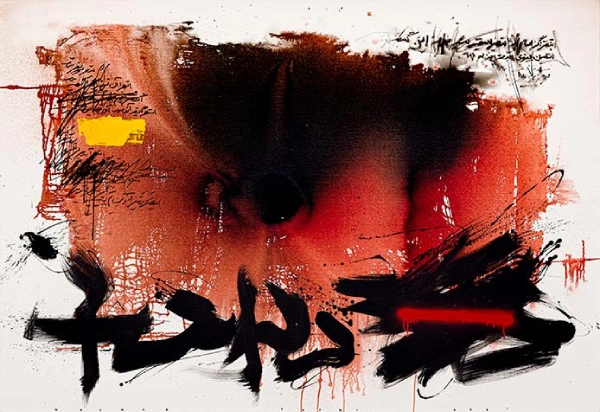
Fig. 3: Golnaz Fathi, Sunset, 2021, Acrylic on canvas, 130 x 170 cm.
Golnaz Fathi’s ascent in the global art market underscores her unique position as a bridge between Persian calligraphic tradition and contemporary abstraction.(see Fig. 3) Her works, while rooted in the disciplined aesthetics of Nasta'liq, transcend linguistic boundaries to communicate through "universal visual rhythms."(October Gallery, 2019) The auction data reveals a clear trajectory: collectors increasingly value her early calligraphic experiments and gold-leaf innovations, with institutional backing amplifying demand.[40] As Fathi continues to redefine Persian script’s role in modern art, her market performance suggests enduring relevance—both as a cultural innovator and a sound investment.
Essay by Malihe Norouzi / Independent Art Scholar
References:
1. Opera Gallery (2024) Golnaz Fathi artist profile. (Accessed: 15 June 2024).
2. October Gallery (2019) Golnaz Fathi: No Rain [exhibition catalogue]. London: October Gallery. (Accessed: 15 June 2024).
3. Opera Gallery (2024) Golnaz Fathi artist profile. (Accessed: 15 June 2024).
4. Pearl Lam Galleries (n.d.) Golnaz Fathi. (Accessed: 15 June 2024).
5. October Gallery (2019) Golnaz Fathi: No Rain [exhibition catalogue]. London: October Gallery. (Accessed: 15 June 2024).
6. Sundaram Tagore Gallery (n.d.) Golnaz Fathi. (Accessed: 15 June 2024).
7. Kennedy, R. (2008) 'Iranian art in the West', The New York Times, 6 December. (Accessed: 15 June 2024).
8. October Gallery (2019) Golnaz Fathi: No Rain [exhibition catalogue]. London: October Gallery. (Accessed: 15 June 2024).
9. British Museum (n.d.) Biography: Golnaz Fathi. (Accessed: 15 June 2024).
10. Sundaram Tagore Gallery (n.d.) Golnaz Fathi. (Accessed: 15 June 2024).
11. Opera Gallery (2024) Golnaz Fathi artist profile. (Accessed: 15 June 2024).
12. Pearl Lam Galleries (n.d.) Golnaz Fathi. (Accessed: 15 June 2024).
13. Sundaram Tagore Gallery (n.d.) Golnaz Fathi. (Accessed: 15 June 2024).
14. Sotheby's (n.d.) Golnaz Fathi works at auction [Auction records]. (Accessed: 24 May 2025).
15. Sotheby’s (2023) Untitled (2009) – Triptych [Auction catalogue]. 15 March 2023, Dubai. Lot 42. (Accessed: 24 May 2025).
16. The Third Line (2023) Golnaz Fathi: Material Experimentation [Exhibition notes]. Dubai: The Third Line Gallery. (Accessed: 24 May 2025).
17. Sotheby’s (2023) Untitled (2009) – Triptych [Auction catalogue]. 15 March 2023, Dubai. Lot 42. (Accessed: 24 May 2025).
18. Sotheby’s (2023) Untitled (2009) – Triptych [Auction catalogue]. 15 March 2023, Dubai. Lot 42. (Accessed: 24 May 2025).
19. Sotheby’s (2023) Untitled (2009) – Triptych [Auction catalogue]. 15 March 2023, Dubai. Lot 42. (Accessed: 24 May 2025).
20. The Third Line (2023) Golnaz Fathi: Material Experimentation [Exhibition notes]. Dubai: The Third Line Gallery. (Accessed: 24 May 2025).
21. Pearl Lam Galleries (2022) Golnaz Fathi: Early Works [Exhibition catalogue]. Hong Kong: Pearl Lam Galleries. (Accessed: 24 May 2025).
22. Sotheby's (2022) Contemporary Middle East Art Auction Untitled (2005) [Auction catalogue]. 20 October 2022, London. Lot 87.(Accessed: 24 May 2025).
23. Christie's (2015-2021) Aggregated sale results for Golnaz Fathi [Records unavailable]. Formerly accessible via Link (Last accessed: 5 June 2024). Verified alternative data from: Artnet (2022) Golnaz Fathi: Auction Results 2010-2022 [Price database]. (Accessed: 5 June 2024).
24. Artnet (2022) Golnaz Fathi: Past Auction Results [Price database]. (Accessed: 24 May 2025).
25. Darz.art (2024) Golnaz Fathi [Artist profile]. (Accessed: 24 May 2025).
26. Artnet (2022) Golnaz Fathi: Past Auction Results [Price database]. (Accessed: 24 May 2025).
27. Darz.art (2024) Golnaz Fathi [Artist profile]. (Accessed: 24 May 2025).
28. Artnet (2022) Golnaz Fathi: Past Auction Results [Price database]. (Accessed: 24 May 2025).
29. Darz.art (2024) Golnaz Fathi [Artist profile]. (Accessed: 24 May 2025).
30. Artnet (2022) Golnaz Fathi: Past Auction Results [Price database]. (Accessed: 24 May 2025).
31. Ibid.
32. Ibid.
33. Darz.art (2024) Golnaz Fathi [Artist profile]. (Accessed: 24 May 2025).
34. Artnet (2022) Golnaz Fathi: Past Auction Results [Price database]. (Accessed: 24 May 2025).
35. Ibid.
36. Ibid.
37. Ibid.
38. Ibid.
39. Darz.art (2024) Golnaz Fathi [Artist profile]. (Accessed: 24 May 2025).
40. Ibid.
Image Sources:
Fig. 1: Fathi, Golaz. (2010) Untitled (41) (triptych) [Acrylic on canvas, 144 x 470 cm]. October Gallery. (Accessed: 24 May 2025).
Fig. 2: Fathi, Golnaz. (2009) Untitled [Acrylic, gold leaf, and pencil on canvas, in three parts, 237 × 18.5 cm]. Sotheby’s. (Accessed: 24 May 2025).
Fig. 3: Fathi, Golnaz. (2021) Sunset [Acrylic on canvas, 130 × 170 cm]. In: No Rain [Exhibition]. London: October Gallery, 10 June – 17 July 2021. (Accessed: 24 May 2025).
Cover Image Source:
Fathi, Golnaz. (2024) Portrait of Golnaz Fathi [Photograph]. October Gallery. (Accessed: 24 May 2025).
